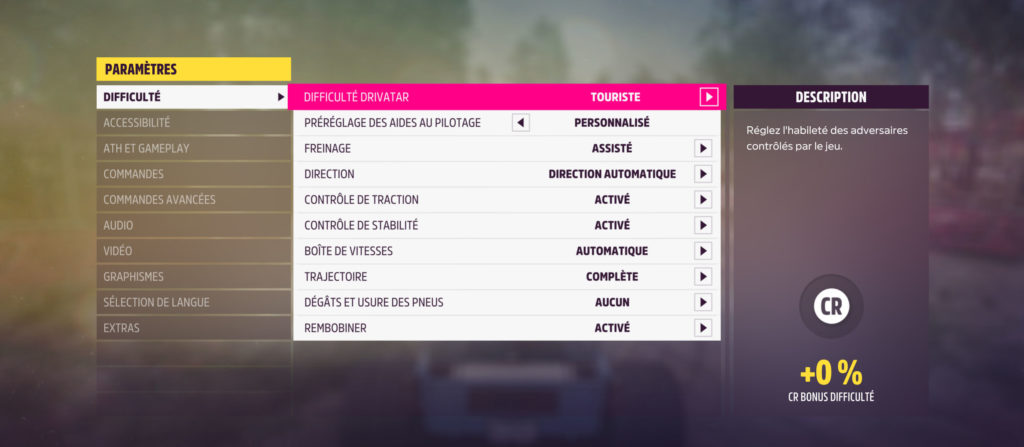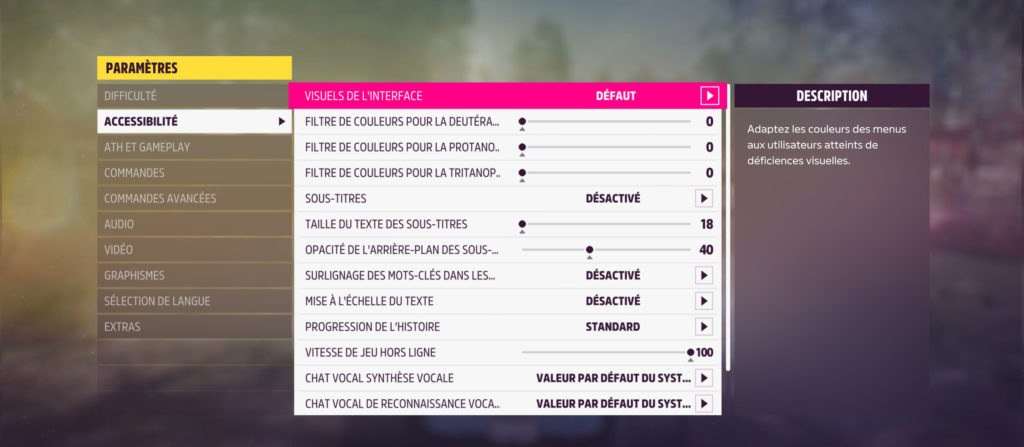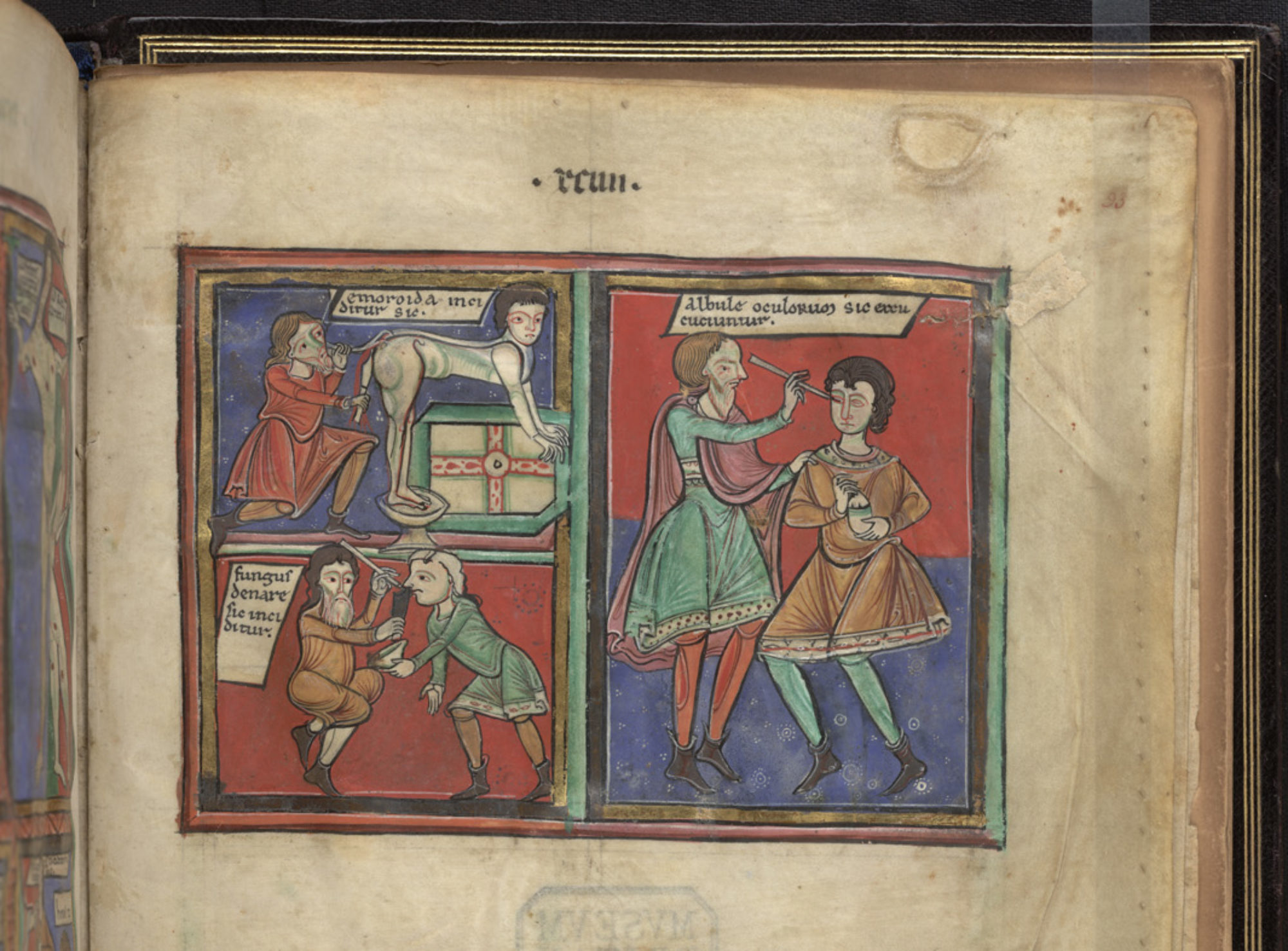.
Paper first published in French on the Online Journal Dieses.fr under the title “Handicap et jeux vidéo : la voie de l’accessibilité“
.
.
As revenues from video games of all kinds (PC, consoles, mobile) continue to grow, publishers are now looking to make their works accessible to people with disabilities in order to attract and satisfy a maximum number of players. The release of the driving simulation video game Forza Horizon 5, on November 9, 2021, and its fifth major update in March 2022, is an opportunity to take stock of the accessibility of video games.
From the fight for accessibility to “hand-e-sport”
Disabled people represent at least 15% of the world’s population (including 12 million French people), while regular video game players represent about 40% of the world’s population (and 14 million French people). We can therefore understand the economic interest that underlies the accessibility efforts made by the studios. The biggest publishers do not hide their desire to facilitate accessibility for disabled players – targeting 400 million people according to Xbox.
However, if we want to understand this development, we must first turn to the players themselves. Disabled people and allies with a passion for video games started to create communities in France and abroad in the early 2010s, a decade that saw an explosion in the number of avid gamers and the revenues generated by video games. The French association Capgame and the Game lover blog were founded in 2013, one year after the birth of similar associations in the United States, such as Dager or, later, Can I play that?. In addition to sharing tips, accessibility tests, and tricks, their common goal is to work for accessibility in video games. Their struggles and advances are relayed by the French specialized press, such as the video game media Gamekult, which dedicated a feature to the subject as early as 2017, or the documentaries shot in 2018 and 2019 by the French syndicat des éditeurs de logiciels de loisirs.
Challenged in particular by these associations, producers, manufacturers of peripheral devices or major studios reacted between 2017 and 2019: Sony and Xbox launched accessibility guides for developers, Microsoft and Logitech developed adapted controllers in 2018 and 2019 respectively, while Ubisoft and EA, for example, committed to more accessibility. But it is often thanks to legislative changes that practices evolve most effectively. Forcing American studios and anyone wishing to market a title in the United States to make games accessible to all as much as possible, the 21st Century Communications and Video Accessibility Act (CVAA), which went into effect on January 1, 2019 in the video game world, has allowed the industry to take a leap forward. As of March 2019, Europe has also passed the European Accessibility Act, implementing the same requirements.
Today, the improvement of accessibility (especially of controllers) allows a greater number of disabled people to play individually or collectively, whether online or during e-sport tournaments. These are organized during major video game events, such as Paris Game Week in France, by associations such as CapGame (on PES, Street Fighter and Forza Motorcycle) or during the official e-sport league launched by the French Federation of Handisport open to licensed players (on Trackmania and Fifa 21).
As the development of a game takes many years, it is only since the end of the 2010s and the beginning of the 2020s that the combined efforts of gamers and the video game industry are felt.
A new milestone in video game accessibility: Forza 5 Horizon
Released in 2018, the games The Persistence, a survival horror roguelike (in virtual reality on Playstation), or Celeste, an independent platformer (released on all platforms), are considered pioneering games in terms of accessibility. The following year, Gears 5, a third-person shooter published by Xbox (2019), and The Last of Us 2, an action-adventure game exclusive to the Playstation 4 (2020), are among the so-called “triple A” games (with a large budget) that have allowed the big studios to raise the accessibility standards of the sector. Notably, the annual Game Awards ceremony in 2020 created an “Innovation in Accessibility” award given to a game with innovative accessibility features. The first year distinguished The Last of Us 2, while on December 10, 2021, the title is won by the game Forza Horizon 5 for the impressive amount of accessibility options available.

While The Last of Us 2 allowed real visual, auditory or motor adaptation thanks to more than 60 accessibility options in the menus, Forza 5 innovates. In addition to the fairly standard UI (User Interface) options now found in most games (menu accessibility, editable subtitles, real-time voice-to-text and text-to-voice transcription), or efforts related to gameplay (controller settings, display zones, and difficulty level), or even in terms of graphics (contrast and colorimetry adapted to different color blindness or for all color perceptions), the open-world racing game developed by Playground Games has taken these options to another level.
First of all, the difficulty is highly accessible, thanks to a specificity of the game that integrated, since Forza Motosport 3 (2009), the possibility to “rewind” the game to allow the player to go back in time in case of driving mistake. Then, the fifth Horizon opus is equipped with an option to manage the game speed (offline) in order to slow it down, an efficient driving and braking aid, visual indications of the trajectory to follow and a speed limiter, so that all players can take the wheel. Finally, the 9 difficulty levels of the “Drivatars” (artificial intelligence of the virtual opponents, adjustable from “tourist” to “unbeatable”) prove that the developers have worked with their community to make the accessibility of the game a priority, as announced by the game’s creative director, Mike Brown, on the day of the game’s release on the Xbox blog. Players have thus been put at the center of the game design process, particularly via the UX (user experience), following decisions that were made early in the game’s development.

One of the main new features, which has been much talked about, is the implementation of sign language translation (American and British) by actors from the deaf and hard-of-hearing community during the game’s cinematics and dialogues. This feature, revealed at the release of the game, arrived in the March 2022 update (series 5). It took 5 months before ASL and BSL audiences could enjoy the translation, with no information on other sign languages yet.
Obviously, a few players are complaining about the “casualization” of the game, which automatically activates all the help options, reinforcing the arcade aspect of Forza Horizon 5. Other controversies appeared as soon as the game was released, concerning the use of tools made available to disabled players to “cheat”. Indeed, the driving assistance can be used, for example, to let the car run on a circuit and thus win rewards without being in front of the screen. Earning a lot of virtual money easily and quickly, these players destabilize the game market and are therefore condemned by their peers. However, on the forums, it is mainly the accessibility that is criticized by some who lament the existence of these inclusive options.
On the other hand, the accessibility efforts, in terms of interface, gameplay and graphics, are also accompanied by a real novelty in terms of inclusiveness and representation of several visible disabilities. The customization of the avatar (not playable but present on the screen on many occasions) allows the players to choose a character with prosthetic arms or legs. The developers of Forza Horizon 5, with the help of their community, have made accommodating the disabled audience a priority. While it is clear that this game is a milestone in video game accessibility, one can only hope that it leads the way and serves as a model for the video game industry.
To go further
Merry, « Handicap et Jeu vidéo : en 2020, l’accessibilité n’est plus une option », Gamekult, 11 septembre 2020, accès libre.
Paul Cairns, Christopher Power, Mark Barlet, Greg Haynes, « Future design of accessibility in games: A design vocabulary », International Journal of Human-Computer Studies, Volume 131, 2019, Pages 64-71, ISSN 1071-5819, doi.org/10.1016/j.ijhcs.2019.06.010.
Aguado-Delgado, J., Gutiérrez-Martínez, JM., Hilera, J.R. et al. Accessibility in video games: a systematic review. Univ Access Inf Soc 19, 169–193 (2020). doi.org/10.1007/s10209-018-0628-2.
